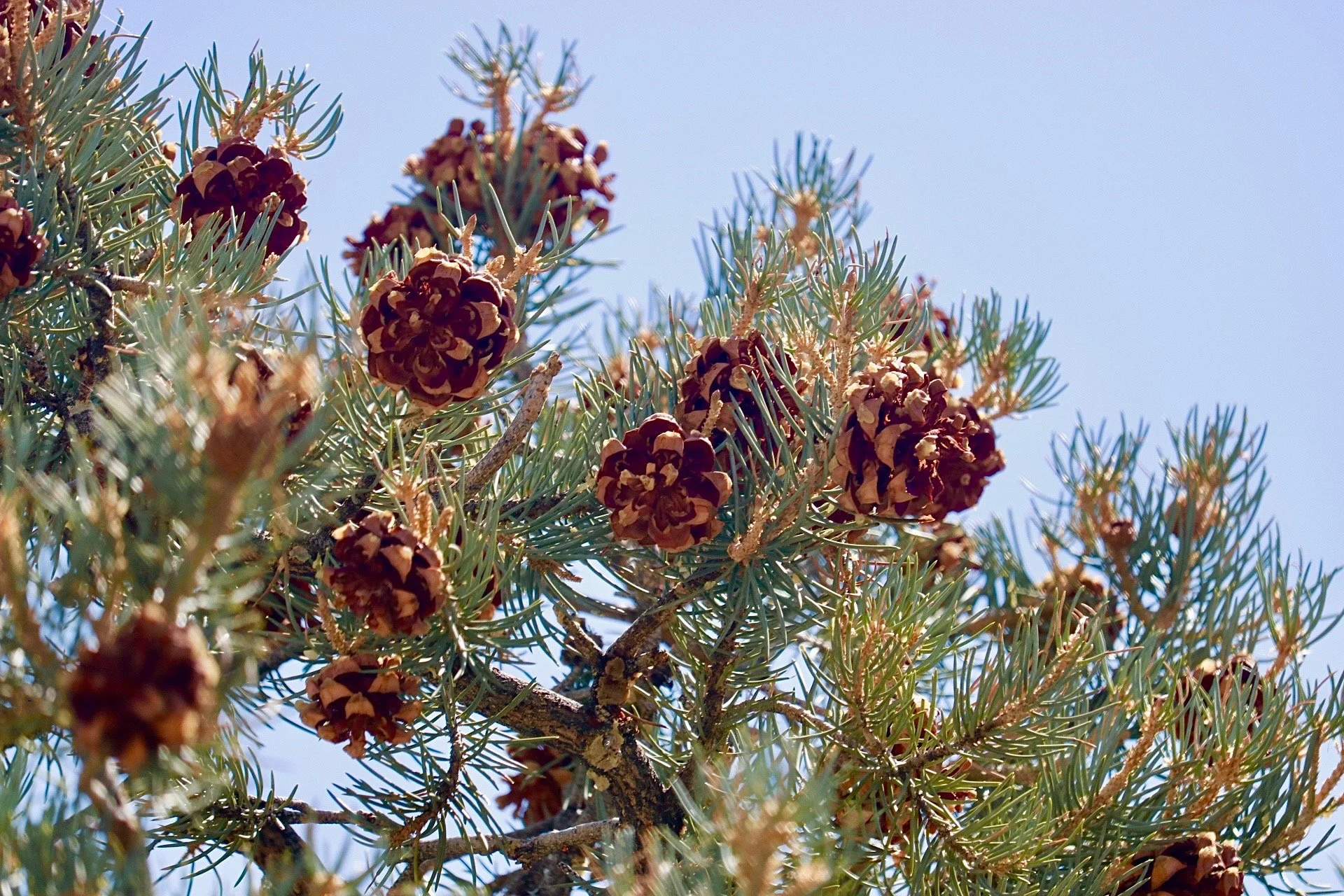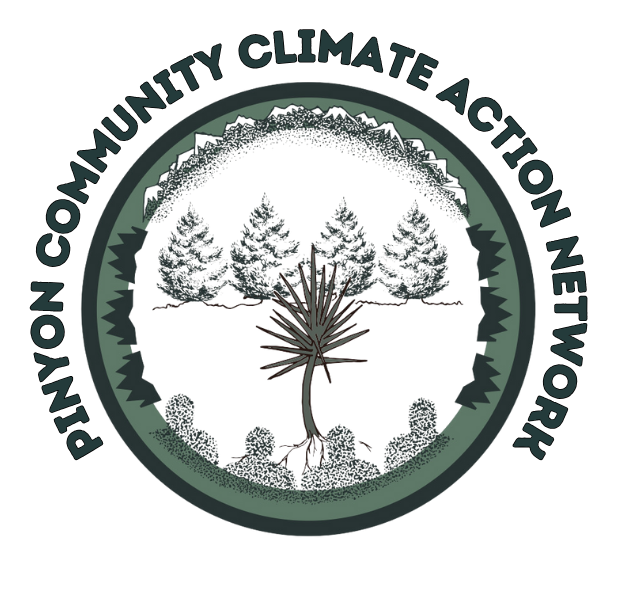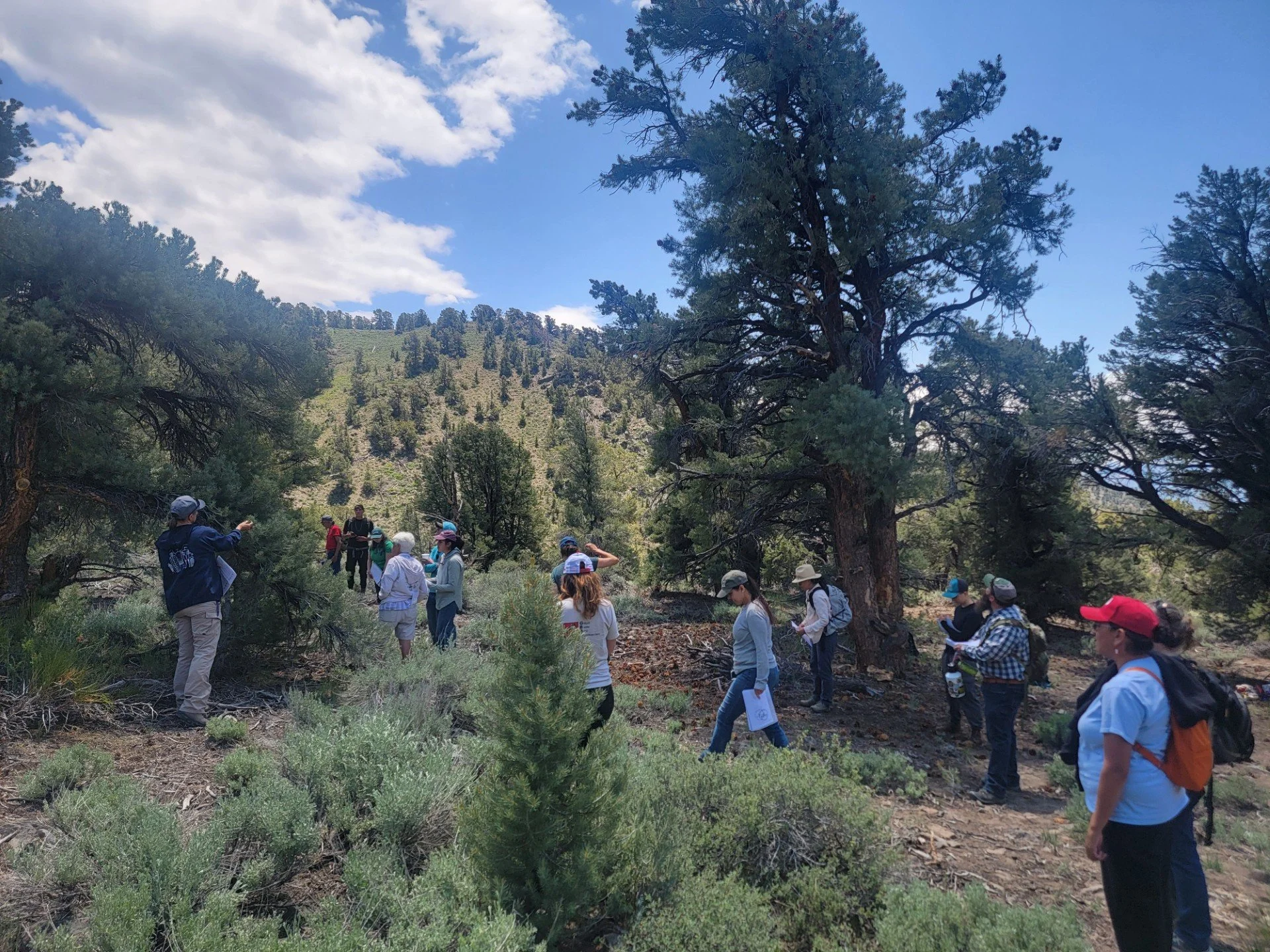
Community Woodland Monitoring
In response to widespread pinyon pine mortality, the Bishop Paiute Tribe created the Tribal Citizen Wunupu (Pinyon, Pine Nut Tree) survey.
Today, we are building on this survey by creating a community science monitoring app, cultivating community-based networks that center and uplift Tribal-led initiatives and solutions, and identifying areas of declining health for future stewardship. Community members across the Eastern Sierra are now equipped to identify and systematically document changes in woodland health. We’re ensuring that local knowledge and Indigenous stewardship guide conservation efforts in these culturally significant landscapes.
How does the app work?
Site Selection
-
[BLOCK]
-
[Block]
-
Standardized observations include tree mortality percentages, stress indicators (needle browning, bark beetle activity, crown dieback), recovery signs in previously affected areas, and environmental conditions. Geotagged photography provides visual documentation of site conditions over time.
-
Monthly site visits are recommended to capture seasonal variations and gradual changes in woodland health.
The protocol allows flexibility for weather and access constraints while maintaining consistent data collection standards across the monitoring network.
-
The approach prioritizes accessibility and convenience for community members. People can select monitoring sites along their regular walking routes, near their homes, or in areas they already visit frequently. This ensures sustainable, long-term participation by integrating woodland monitoring into existing routines rather than requiring special trips.
-
Current monitoring sites span from Bishop to Bridgeport, with concentration in areas showing historical pinyon mortality patterns. The network aims for representative coverage across elevation gradients, aspect variations, and different land management jurisdictions.

